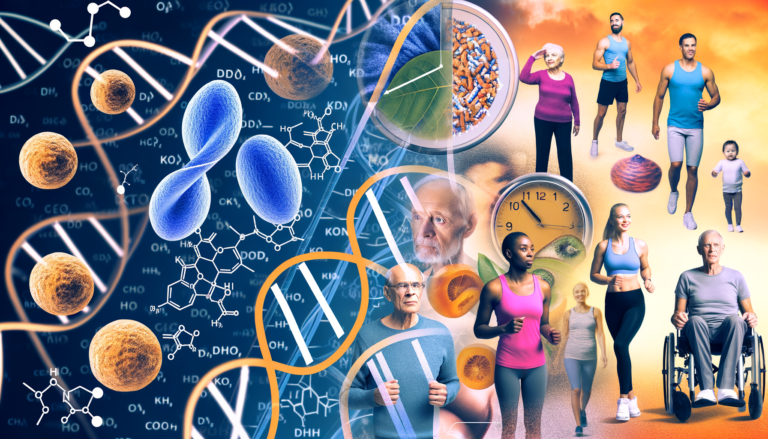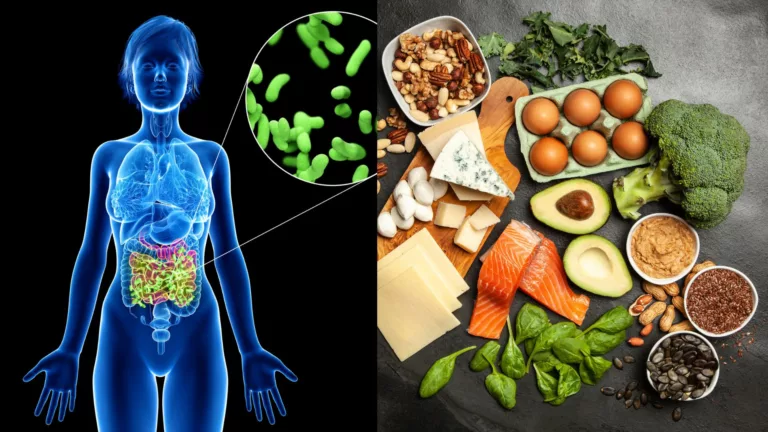Are you tired of feeling tired? Are you looking for a way to break free from the shackles of aging and regain your youthful energy? Look no further! In this article, we will delve into the fascinating world of intermediate fasting and its connection to human growth hormone (HGH) production. HGH, often referred to as the “fountain of youth,” plays a crucial role in maintaining our body’s vitality and slowing down the aging process. By understanding the link between intermediate fasting and HGH production, you can unlock the secrets to a longer, healthier, and more vibrant life. So, strap in and get ready to embark on a journey that will revolutionize the way you think about aging. Get ready to break the aging barrier with the power of intermediate fasting and discover the key to unlocking your true potential.
Understanding the Aging Process
Aging is an inevitable part of life. As we grow older, our bodies undergo various changes that can impact our overall health and well-being. From a decrease in muscle mass and bone density to an increase in wrinkles and fatigue, aging can take a toll on both our physical and mental state. But what if there was a way to slow down this aging process and regain our youthful vitality? Enter intermediate fasting.
Intermediate fasting is not just another diet fad; it is a lifestyle change that has been gaining popularity in recent years. The concept of intermediate fasting involves restricting your eating window to a specific period of time, typically between 8 to 12 hours, and fasting for the remaining hours of the day. This method of eating has been shown to have numerous health benefits, including increased HGH production.
What is Human Growth Hormone (HGH)?
Before we dive into the link between intermediate fasting and HGH production, let’s first understand what HGH is and why it is so important for our bodies. Human growth hormone, or HGH, is a hormone produced by the pituitary gland in the brain. It plays a crucial role in stimulating growth, cell regeneration, and maintaining healthy body composition.
During our younger years, HGH levels are naturally high, contributing to our growth and development. However, as we age, these levels gradually decline, leading to the symptoms commonly associated with aging. By finding ways to naturally increase HGH production, we can potentially slow down the aging process and reap the benefits of a more youthful body and mind.
The Benefits of Increased HGH Production
Increased HGH production has been linked to a wide range of benefits that can have a profound impact on our overall health and well-being. One of the most notable benefits of HGH is its ability to promote muscle growth and increase muscle strength. This is especially beneficial for older adults who may be experiencing muscle loss due to aging.
Additionally, HGH has been shown to improve bone density, reduce body fat, and enhance exercise performance. It also plays a role in improving sleep quality, boosting immune function, and increasing energy levels. With all these incredible benefits, it’s no wonder why HGH is often referred to as the “fountain of youth.”
The Science Behind Intermediate Fasting and HGH Production
So, how exactly does intermediate fasting affect HGH production? The answer lies in the way our bodies respond to fasting. When we fast, our insulin levels drop, triggering a series of hormonal changes in the body. One of these changes is an increase in HGH production.
Research has shown that fasting for as little as 16 hours can significantly increase HGH levels in the body. This increase in HGH production can have profound effects on our health, from promoting fat loss and muscle growth to improving cognitive function and reducing the risk of chronic diseases.
Different Methods of Intermediate Fasting
There are several different methods of intermediate fasting that you can choose from, depending on your lifestyle and preferences. The most common methods include the 16/8 method, the 5:2 diet, and alternate-day fasting.
The 16/8 method involves fasting for 16 hours and restricting your eating window to 8 hours. For example, you might choose to eat between 12 pm and 8 pm and fast for the remaining 16 hours. This method is popular among many intermediate fasters due to its simplicity and flexibility.
The 5:2 diet involves eating normally for 5 days of the week and restricting calorie intake to 500-600 calories for the remaining 2 days. This method allows for more flexibility in terms of food choices but requires more discipline on the fasting days.
Alternate-day fasting, as the name suggests, involves fasting every other day. On fasting days, you consume little to no calories, while on non-fasting days, you eat normally. This method can be more challenging for some individuals but has been shown to yield significant results in terms of HGH production and weight loss.
How to Incorporate Intermediate Fasting into Your Lifestyle
Incorporating intermediate fasting into your lifestyle may seem daunting at first, but with a little planning and preparation, it can become a sustainable and enjoyable routine. Here are some tips to help you get started:
1. Start slowly:
If you’re new to intermediate fasting, it’s best to start with shorter fasting periods, such as 12 hours, and gradually increase the fasting window as your body adjusts.
2. Stay hydrated:
During fasting periods, it’s important to stay hydrated by drinking water, herbal tea, or other non-caloric beverages. This will help curb hunger and keep your body functioning optimally.
3. Plan your meals:
To make the most out of your eating window, plan your meals in advance and focus on nutrient-dense foods that will fuel your body and support HGH production.
4. Listen to your body:
Pay attention to how your body responds to intermediate fasting. If you’re feeling excessively hungry or fatigued, it may be a sign that you need to adjust your fasting schedule or seek guidance from a healthcare professional.
5. Stay consistent:
Consistency is key when it comes to intermediate fasting. Try to stick to your fasting and eating windows as much as possible to maximize the benefits.
Common Misconceptions About Intermediate Fasting and HGH Production
Despite the growing popularity of intermediate fasting, there are still some common misconceptions surrounding its effects on HGH production. One of the most common misconceptions is that fasting for longer periods will yield better results. While longer fasting periods may increase HGH levels to some extent, it’s important to find a fasting routine that works for you and is sustainable in the long run.
Another misconception is that intermediate fasting will cause muscle loss. On the contrary, research has shown that intermediate fasting can actually help preserve muscle mass by stimulating HGH production and promoting muscle growth.
Potential Risks and Considerations
While intermediate fasting can have numerous health benefits, it’s important to approach it with caution and consider any potential risks or contraindications. It may not be suitable for everyone, especially those with certain medical conditions or individuals who are pregnant or breastfeeding.
Additionally, it’s important to ensure that you’re still getting all the essential nutrients your body needs during your eating window. If you’re unsure about how to balance your meals or have specific dietary requirements, consulting with a healthcare professional or registered dietitian can provide valuable guidance.
Conclusion: Embracing Intermediate Fasting for a Youthful Future
In conclusion, intermediate fasting offers a promising approach to breaking the aging barrier and unlocking our true potential. By understanding the link between intermediate fasting and HGH production, we can tap into the natural rejuvenating power of our bodies and experience the benefits of a longer, healthier, and more vibrant life. Whether you choose to start with shorter fasting periods or dive into more advanced methods, incorporating intermediate fasting into your lifestyle can be a game-changer. So, why wait? Start your journey to a youthful future today and embrace the power of intermediate fasting. The fountain of youth is within reach, and it’s waiting for you to take the leap.
References
- Ho KY, Veldhuis JD, Johnson ML, et al. Fasting enhances growth hormone secretion and amplifies the complex rhythms of growth hormone secretion in man. J Clin Invest. 1988 Apr;81(4):968-75. doi: 10.1172/JCI113450. PMID: 3127426. Link: https://www.ncbi.nlm.nih.gov/pmc/articles/PMC329619/
- Alirezaei M, Kemball CC, Flynn CT, et al. Short-term fasting induces profound neuronal autophagy. Autophagy. 2010;6(6):702-710. doi:10.4161/auto.6.6.12376 Link: https://pubmed.ncbi.nlm.nih.gov/20534972/
- Hartman ML, Veldhuis JD, Johnson ML, et al. Augmented growth hormone (GH) secretory burst frequency and amplitude mediate enhanced GH secretion during a two-day fast in normal men. J Clin Endocrinol Metab. 1992 Apr;74(4):757-65. doi: 10.1210/jcem.74.4.1548337. PMID: 1548337. Link: https://academic.oup.com/jcem/article-abstract/74/4/757/2635960
- Aksungar FB, Topkaya AE, Akyildiz M. Interleukin-6, C-reactive protein, and biochemical parameters during prolonged intermittent fasting. Ann Nutr Metab. 2007;51(1):88-95. doi:10.1159/000100954 Link: https://pubmed.ncbi.nlm.nih.gov/17374948/







